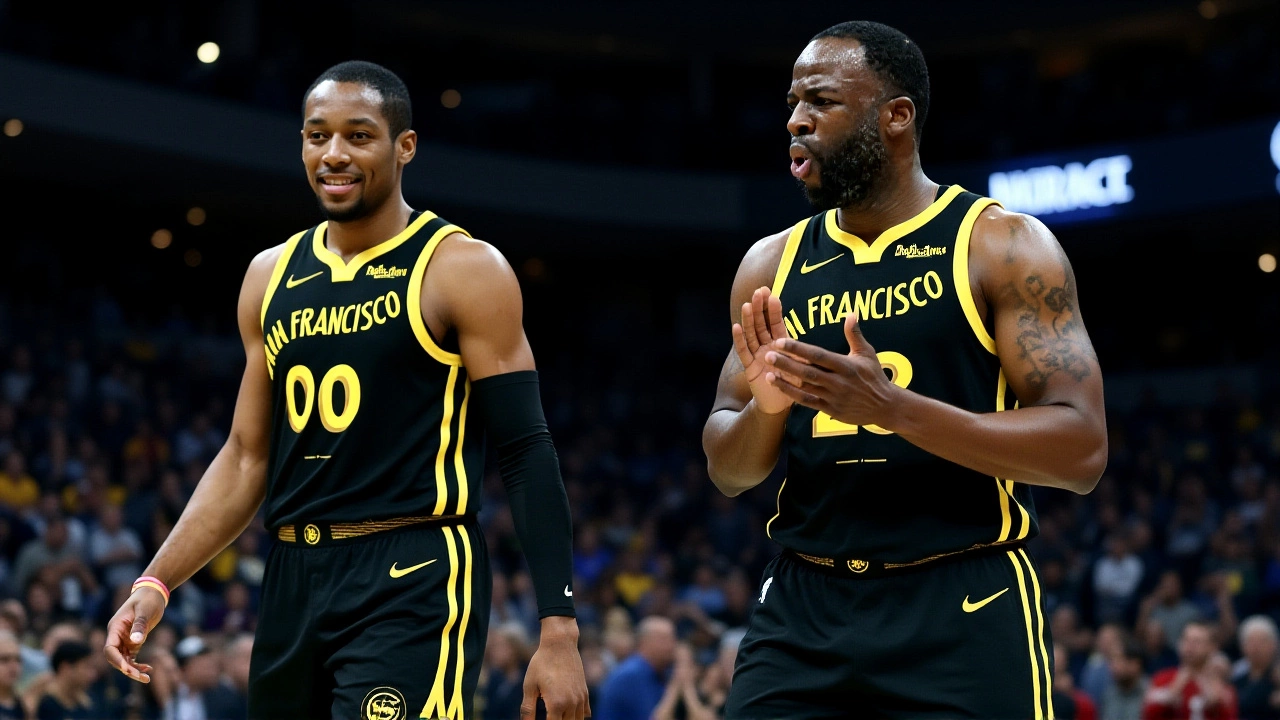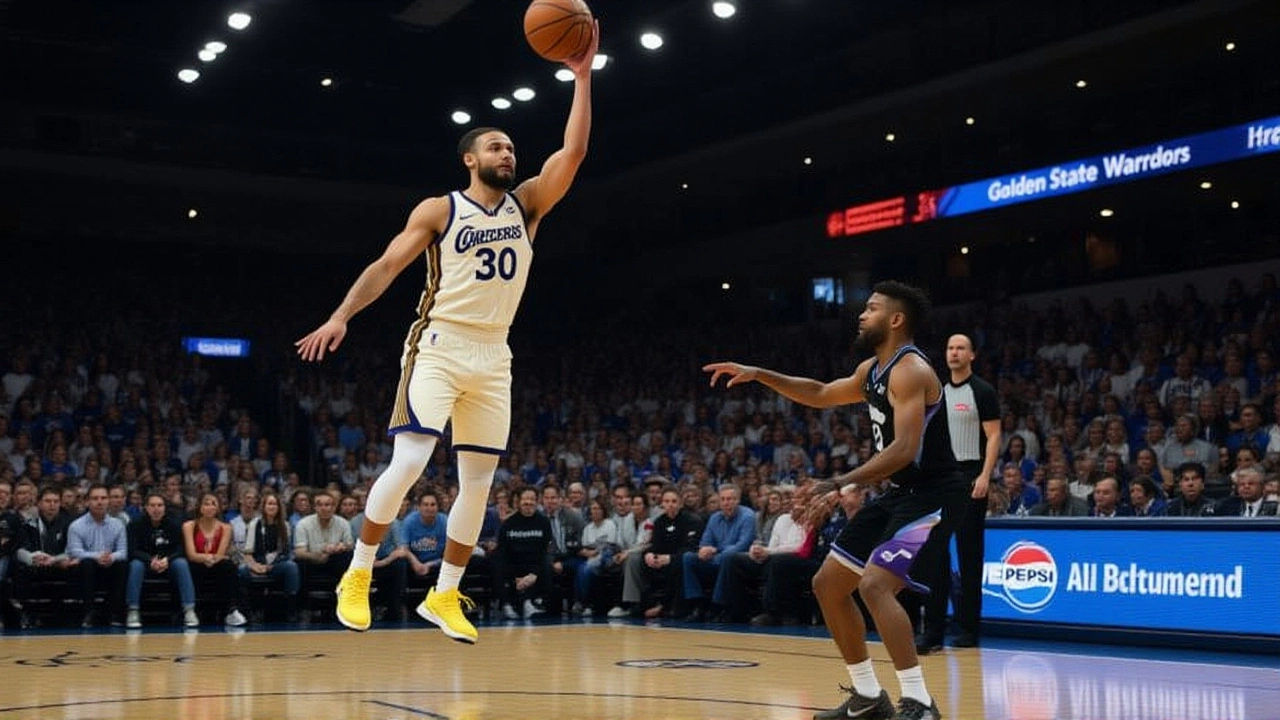Wardell Stephen Curry II didn’t just score 31 points—he orchestrated a statement win. On Monday, November 24, 2025, at Chase Center in San Francisco, the Golden State Warriors dismantled the Utah Jazz 134-117, turning what looked like a competitive matchup into a second-quarter explosion that never let up. Curry, the face of the franchise, hit six three-pointers, added four rebounds, and moved the ball with surgical precision. But it wasn’t just him. The Warriors’ offense, humming like a well-tuned engine, turned Chase Center into a cauldron of rhythm threes and easy baskets. And for the Jazz? Another night of chasing shadows.
Second Quarter Avalanche
The game was tied at 26-26 after the first quarter. Then came the second. The Warriors went on a 41-20 run that didn’t just shift momentum—it erased it. They didn’t just shoot better; they moved better. Ball rotation was crisp. Defenders rotated late. And every time the Jazz thought they’d contained the surge, someone like Buddy Hield (20 points, 5 rebounds, 4 assists) would find space in the corner and drain another. The Warriors outscored them by 21 points in that single frame. It was the kind of quarter that makes coaches smile and opponents sigh.Curry’s Quiet Mastery
Stephen Curry didn’t need to force anything. He didn’t need to take 25 shots. He took 19—and made 11. His threes weren’t deep, desperate heaves; they were rhythm shots, pulled up off screens, or after a quick crossover that froze defenders mid-step. Broadcast analysts noted he “loves shooting three and getting to the rim,” and on this night, he did both. He stopped short, pulled up from 22 feet, and hit it. He drove, drew two defenders, and kicked to an open man. He even had two steals in the third quarter that led to fast-break buckets. His defense? “STAFF Y DEFENSIVELY,” one commentator muttered. Translation: he was everywhere.Jazz Fight, But Can’t Find Answers
For the Jazz, Keyonte George was a bright spot—28 points, 7 assists, 6 rebounds. He played with grit, especially in the fourth quarter when he drove hard to the rim and hit a tough floater over Quinten Post. But he was alone. Utah’s bench combined for just 32 points. Their rebounding? Outmatched 48-39. Second-chance points? Warriors 18, Jazz 10. Turnovers? Warriors committed just 9. “They played a clean game,” said one sideline reporter. The Jazz? 16 turnovers. And they didn’t get to the free-throw line often enough to make up the difference.Coach Kerr’s Philosophy in Action
After the game, Steve Kerr stood at the podium with Curry and a few others, smiling. When asked about Curry’s impact, Kerr didn’t gush. He didn’t need to. “How did he impact this game? Uh, he did a little bit of everything,” Kerr said. “I mean, just playing the right way, keeping it simple. He kept everything flowing and was making the right reads on defense. So, he helped us a lot.” It was classic Kerr—understated, but loaded. He wasn’t talking about stats. He was talking about rhythm. About trust. About players knowing their roles.
Standings Shift, Momentum Builds
The win pushed the Warriors to 10-9 on the season, moving them into seventh place in the Western Conference. It was their first win in a row after a rocky 1-4 stretch. Their home record? 6-4 at Chase Center, where the crowd of 18,064 roared like it was a playoff game. Meanwhile, the Jazz fell to 5-12, extending their losing streak to four games. They’re now 11.5 games behind the top-seeded Oklahoma City Thunder, who are 17-1 and looking like the team to beat.Even the bench played its part. Ace Bailey, the quick-decision-making guard, provided energy off the pine. Moses Moody played through a headband that came loose mid-game—didn’t stop him from rotating on defense. And Gui Santos? He delivered a pass to someone referred to only as “Jimmy” in the broadcast—though Jimmy Butler isn’t on the roster. Maybe it was a nickname. Maybe it was a misheard name. Either way, the Warriors didn’t need clarity. They just needed execution.
What’s Next? A Test of Consistency
The Warriors face their next game on November 26, 2025—opponent still unconfirmed—but they’re now playing with confidence. Their offensive rating has climbed to 121.3 over the last three games. That’s top-five in the league. The Jazz? They’re on the road again on November 27, heading into a tough stretch against playoff-caliber teams. Their rebuild isn’t over—it’s just getting harder.What’s clear? The Warriors aren’t just back. They’re finding their identity again—not through brute force, but through chemistry, spacing, and the quiet genius of a man who still makes the impossible look routine.
Frequently Asked Questions
How did Stephen Curry’s performance compare to his previous games this season?
Curry’s 31-point outing was his highest scoring game since October 30, 2025, against the Pelicans. He’d been averaging 24.7 points per game through 18 contests, but this was his first 30-point, 6-three-pointer game of the season. His shooting efficiency—57.9% from the field and 54.5% from three—was also his best in a game with at least 15 attempts since November 2024.
Why did the Warriors dominate the second quarter so decisively?
The Warriors exploited Utah’s weak closeouts and over-aggressive rotations. They ran 12 pick-and-rolls in the quarter, and Curry hit 4 of 5 threes off screens. The Jazz switched too late on screens, and their big men didn’t close out fast enough. Golden State also had 11 assists in that period, with every starter contributing at least one. It was a textbook example of spacing and ball movement overwhelming individual defense.
What does this win mean for the Warriors’ playoff chances?
With a 10-9 record, the Warriors are just 1.5 games behind the 5th-seeded Suns and 2.5 behind the 4th-seeded Lakers. If they maintain this level of play—especially at home—they’re likely to finish in the top 6. Their offensive rating is now 119.8, up from 114.2 in October. Defense remains a concern, but if Curry and Hield keep hitting threes at this clip, they’ll be dangerous in the first round.
How are the Jazz’s struggles affecting their rebuild strategy?
The Jazz are 13th in the West with a 5-12 record, and their 2.9-point differential per game is the worst in the conference. They’re clearly prioritizing development over wins—Keyonte George, a 2023 first-rounder, is playing 34 minutes per game. But with a 2-8 road record, they’re struggling to compete even in close games. Front office sources say they’re evaluating trade candidates for the February deadline, but no major moves are expected until after the All-Star break.
What’s the significance of Chase Center’s attendance for the Warriors’ season?
The 18,064 fans on November 24 marked the sixth sellout at Chase Center this season. Attendance has averaged 17,892 through 10 home games—up from 17,100 last season. That’s not just fan loyalty; it’s a sign the team’s energy is returning. The Warriors have won 6 of their last 7 at home, and the crowd’s noise has been cited by players as a key factor in their late-game execution.
Did the Warriors’ bench make a difference in this game?
Yes. The bench outscored Utah’s reserves 45-28, with Ace Bailey adding 12 points in just 18 minutes. His quick decision-making and ability to push pace kept the offense flowing when Curry rested. Moses Moody and Gui Santos also combined for 15 points and 8 rebounds. This was the most productive bench performance by Golden State since October 15, and it’s a sign they’re finally developing depth beyond their starters.
